Briefly discussed in this post: 11 books (God, Justice, Love, Beauty; Status Anxiety; Capital Hates Everyone; The State in Capitalist Society; Had It Coming; Attachment and Loss Vol. 1; The White Birch; Pedro Paramo; Liquidation; The Great Longing; and The Brief and Frightening Reign of Phil); 7 movies (Ma; Sick; Hell or High Water; Eden Lake; The Proposition; The Stranger; and Scream VI); and 4 documentaries (Money Shot; Orgasm Inc.; Descendant; and Hazing).
Books
1. Nancy, Jean-Luc. God, Justice, Love, Beauty: Four Little Dialogues (2011).
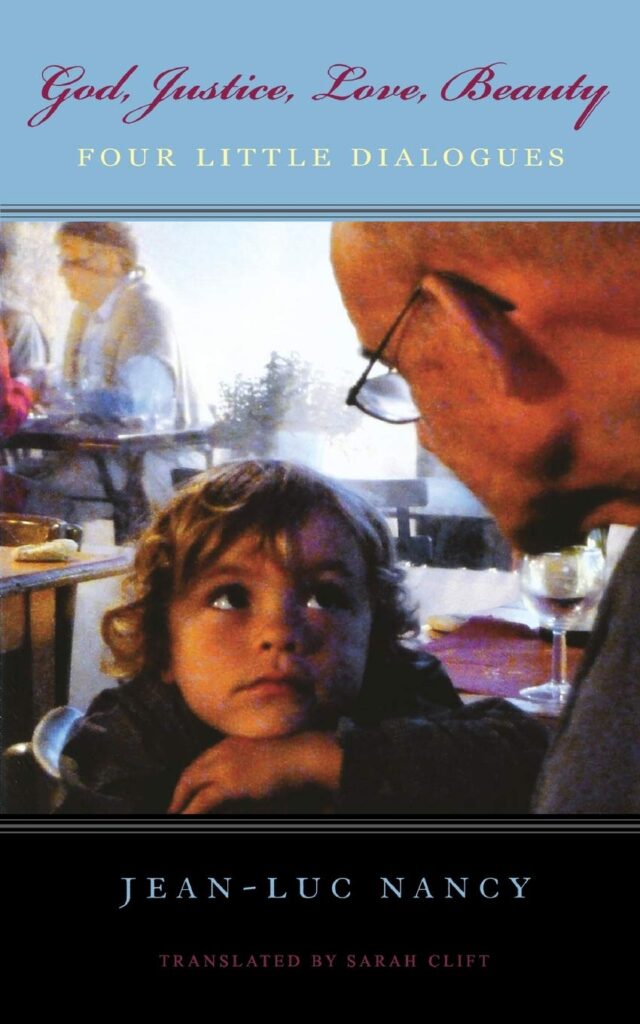
In the early 2000s, Jean-Luc Nancy decided to have a series of conversations with children on some of the big ideas involved in philosophy—God, justice, love and beauty. Those conversations are transcribed here along with the Q&A with the children that followed his talks. I like the idea of this exercise a whole lot (as a father, I’ve often asked myself, how might I speak well about what I am learning from Michel Foucault or David Harvey or whomever else to my children). There are two poles I try to avoid in these exercises in simplification: first, there is the danger of thinking that any theory or idea can be simplified and that if I cannot simplify it, that means I don’t understand it. The truth is that a lot of theory is trying to encourage us to thinking differently, to think in ways that we haven’t thought before, to see in ways we haven’t seen before (see, for example, the ways in which Heidegger talks about the words he uses before he uses them). Simplifying risks taking the Other and reducing it to the Same. However, and this is the second pole to avoid, there is also the danger of thinking that theory requires so much smarts and it so profound that it can’t be simplified or translated into language that is more comprehensible to children. This is false and stems from philosophical hubris or a pretentious elitism… or just plain laziness. The truth is that a lot of theory uses technical language, big words, and jargon in order to quickly refer to bigger ideas or narratives. If my reader is familiar with theory, I can refer to the objet petit a without having to then explain Lacan’s entire theory of desire, I can refer to a Foucauldian genealogy without having to break down Foucault’s work on power/knowledge and regimes of truth, I can refer to a Gramscian interregnum without relaying the history of revolutionary Italian Marxism, and so on. However, if I take the time to carefully and plainly explain the concepts to which these terms refer, then I really can discard a lot of the jargon. Nancy does a good job of walking between these poles. I had a lot of fun reading these dialogues.
2. de Botton, Alain. Status Anxiety (2005 [2004]).
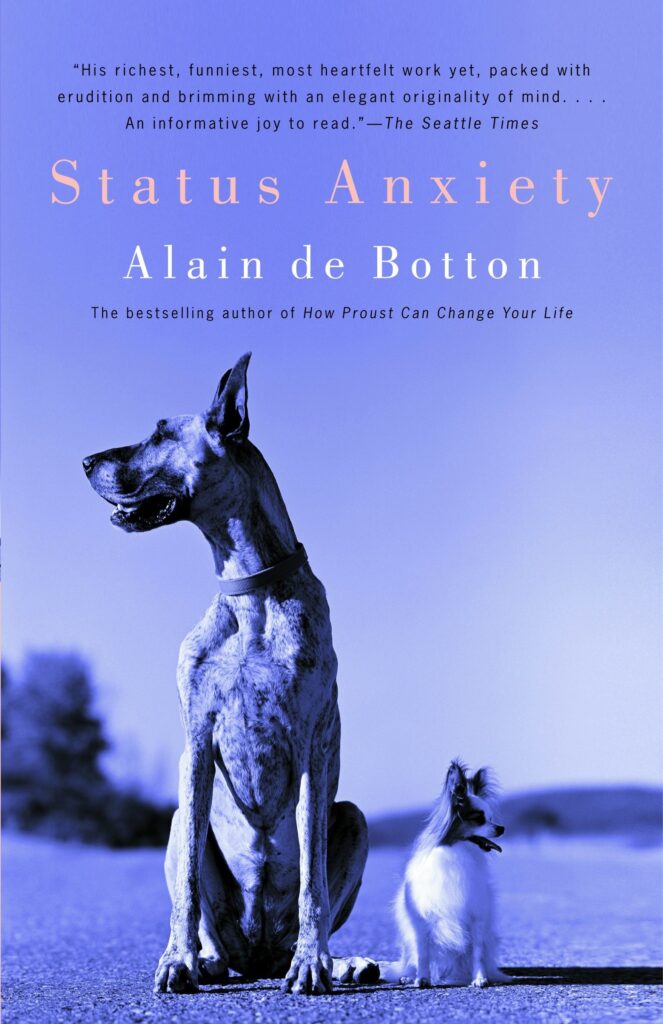
Alain de Botton likes to ramble but he rambles so leisurely and skillfully that it’s a pleasure to ramble along with him. Reading his books, I get the same feeling I experience when sitting in an inner tube and drifting down a winding river—aaaah, this is nice. But, um, in a much more literary way. Because, for all of his criticisms of snobbery—and there are many of them and they are plenty of fun—de Botton is undoubtedly an aesthete. But, like some of the best aesthetes, he doesn’t take himself too seriously and, even when he does, he doesn’t take himself too seriously too seriously. Know what I mean?
Anyway, I very much like how de Botton framed his conversation around status anxiety around the idea that we seek love of two kinds. We seek love in a romantic sense and “love from the world.” It is mostly in relation to the later kind of love-seeking that de Botton explores the matter of status anxiety, how it arises, and how it is related not so much to absolute deprivation as relative suffering (which is no less real for being relative!). A solid series of short, connected essays with plenty of pictures to boot. Good times.
3. Lazzarato, Maurizio. Capital Hates Everyone: Fascism or Revolution (2021).
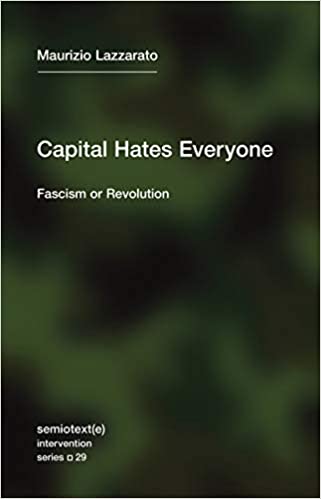
The most important point Lazzarato drives home in this short book, is the shortcomings of a Foucauldian analysis of neoliberalism. In particular, by focusing on biopolitics, govermentality, and the productive side of neoliberalism (in particular, the ways in which it produces a particular kind of subject), Foucault and his followers, neglect not only the racist, sexist and massively colonial projects that gave rise to neoliberalism “the West,” but also the ways in which neoliberalism was forced upon people through wars, coups, dictatorships, and civil wars in so much of the two-thirds world. In other words, to produce the kinds of subjects who can then be subjected to neoliberal governance, people must be first annihilated as political subjects who believe and engage in revolutionary action. First, defeat and the transformation of an opponent into a “loser,” then governance of the neoliberal subject. Only not quite. For as Lazzarato also emphasises, the violence that founds a system (say sovereignty in the Foucauldian discourse) always continues to exist along side of the violence that maintains a system (biopolitics in the Foucauldian discourse). Hence Lazzarato’s emphasis that neoliberalism is as destructive as it is productive, as generative of massive poverty as massive wealth. For Lazzarato, drawing on the work of Deleuze and Guattari, neoliberal capitalism is a war machine.
However (and this is where his analysis drifts, imo), even though the war machine does depend on technological advances, computerization that aids globalization, the financialization of fictitious capital, the ubiquity of data-gathering surveillance technology, Lazzarato pushes back against the Heideggerian understanding of technology as one that is inherently corrosive of authentic human flourishing. Lazzarato views technology and machines as much more morally-neutral and, in fact, as useful tools to be deployed if something like the revolution is going to come (here, more strongly towards the works of the Luddites, Ellul, McLuhan and Heidegger—I think the problem with Heidegger’s analysis of technology is not that he is wrong about the problems arising form technology as that he totally neglects the role of capitalism in his analysis [of course there are other massive problems with Heidegger’s overall philosophical project but those are beside the point here]).
Unfortunately this digression—while leading to some useful comments on the organization of labour and how the disavowal of responsibility at all levels of production and consumption, as well as the fracturing of power from all levels of project management in order to ensure neoliberal trends re: wealth accumulation and dispossession can maintained—means that Lazzarato never gets to go too much into detail in his analysis of contemporary fascisms or the revolutionary alternative. So a strong first third of the book but the rest is kind of meh.
4. Miliband, Ralph. The State in Capitalist Society: The Analysis of the Western System of Power (1973).

Reading through text after text on neoliberalism post-globalization, post-2008 and the global economic crisis, post-permanent austerity, makes the age of Keynesianism starts sounding utopic (especially when the perspective of cishet, able-bodied, working, White men is the perspective taken). The cost of living was so low! Wages and benefits were so good! One person could pay for a whole family, a mortgage, and a vehicle, and everyone could still take a vacation every summer! What a paradise (again, for cishet, able-bodied, working, White men)! But, of course, even apart the fact that all of this wealth was created via colonialism, racial capitalism, and misogynistic heternormativity, things were never as good as we like to imagine them being when we look on the past with our rose-and-White-tinted glasses. Ralph Miliband’s classic study of the ways in which the wealthy operated as the ruling class in society during peak Keynesianism is an excellent reminder of what was actually going on. And, in fact, it helps to show how much of what followed during our ongoing neoliberal era is, in fact, a direct continuation of what was taking place between World War Two and 1979.
5. Doolittle, Robyn. Had It Coming: What’s Fair in the Age of #MeToo? (2019).

Hello Ms. Doolittle,
It was with great interest that I read your book, Had It Coming. Your “Unfounded” series was absolutely top-notch investigative reporting, and I am deeply grateful for what you would able to bring to the attention of the broader Canadian public. Had It Coming was also excellent and I am grateful to you for writing it. Thank you!
I am a cis-het, White male survivor of sexual violence (which I experienced as both a child and an adult), and I have spent my career supporting other survivors, largely through my work with people who are forcibly deprived of housing (“people experiencing homelessness” would be the more popular but less accurate way of describing this), as well as through my work supporting people (male and female, cis and trans, old and young) who engage in sex work (mostly the “low track” or “survival” variant).
When I first began working with youth who are forcibly deprived of housing in Toronto, I was struck by the number of impoverished and abandoned teenage girls who reported (to me) that they had been sexually assaulted by police officers (teenage girls were likely to have been sexually exploited and assaulted by police, teenage boys were likely to have been physically assaulted by police–many of them had been taken on the “Cherry Beach Express,” which I believe most Torontonians are now aware of). Attempting to prevent police from harassing youth at the drop-in I worked at on Yonge St. was the first time I was physically assaulted by a police officer because I was doing my job. It was not the last. After working in Toronto for seven years, I worked in the downtown eastside of Vancouver for seven years. Again I saw the same thing, only this time cops were raping sex workers and were being given preferential treatment at known human trafficking locations (so that the traffickers were always tipped off if a police raid was going to happen—btw, cops in Toronto were aware of child trafficking zones in the downtown core, one area was well-known as “the romper room” but they never moved to bust it up because they felt it was better to be able to monitor it at a known location than have it go somewhere else). In London, we have also seen a great deal of police violence, much of it sexualized, directed at sex working women, impoverished women and, of course, their own partners (police being the profession with the highest reported percentage of domestic abusers, and local VAW shelters put two groups of women in the highest security category: women fleeing organized crime, and women fleeing abusive cops). In both Vancouver and London, because I tried to notify the police that they were violating the rights of people they were targeting at my work, I was (again) physically assaulted by officers. In fact, having worked for 25 years with gang members, people in drug-induced psychosis, people described by the police as dangerous, and so on, I have been assaulted—while doing my job, because I was doing my job—far more by police officers than by any other demographic.
I was thinking about these things again in light of the optimism your book demonstrates regarding police reform. As I’m sure you know, the interconnectedness of rape culture, misogyny, and sexualized violence with policing is not a newly discovered issue. The balcony rapist case in Toronto in the mid-1980s brought a lot of this to the attention of the public when Jane Doe sued the Toronto Police. She won her lawsuit and the Toronto Police were court-ordered to implement a number of reforms but, as Jane Doe demonstrates in her book on that subject, the Toronto Police did everything possible to undermine, warp, or simply not implement those reforms. The police did not reform. And, of course, this is nothing new when it comes to pushes to reform police forces (I call them forces, not services, because I believe services is a dishonest misnomer—police exist because they have a State-granted legal monopoly on the use of force and, as Geo Maher reminds us, they are trained violence workers). Another recent and prominent example that I’m sure you are aware of is the systemic racism that was found to be present in the Thunder Bay Police force and the ways in which that force also totally refused to reform (although I do recall you quoting the Thunder Bay police chief in an approving manner in your book). As studies of police reform demonstrate, these are not one-off situations. Police reform is almost entirely about brand management and about placating the public so that business as usual can continue as usual. Careful study and ongoing frustration, heartache, feelings of grief and betrayal, from communities that continue to be subjected to police violence (including sexualized violence), has led to calls to defund the police. As the collective called “For a World Without Police” says:
“You can’t reform a landmine, but you can dismantle it, destroy the factories that made it, and dissolve the governments and businesses that profit off of its existence. In the same way, we’re not fighting for a new police–nicer, more diverse, with better training than their predecessors–nor even a new justice system. We’re fighting for a world without police. We’re working to disempower, disarm and disband police units and entire agencies wherever they operate, and revolutionize society as a whole.”
In my twenty-five-year career in this sector, having tried every angle I can possibly imagine to resist and overturn death-dealing violence and to contribute to anything life-affirming or life-giving, I find myself agreeing with them.
I say all of this because, despite the great appreciation I have for your work, I think the solution you propose is fundamentally misguided. Ultimately, you call for more conversation and more education. But over the years, through experience and study and bearing witnessing and listening and constantly being challenged to reconsider what I take for granted, I have come to the conclusion that we cannot educate willfully ignorant or blatantly dishonest people into being less violent. Rather, what we can do, is take power away from people who delight in being cruel to others.
This, then, is where I feel like your self-reflection on your own work in relation to second-wave feminists becomes relevant. You ask where you might be missing the boat as they now miss the boat in some critical areas. It is your faith that landmines can be reformed that I believe is misplaced. Men who delight in abusing women and who have the power to do so with impunity, cannot be changed by education alone. They must have the power taken away from them. That, at least, is what I believe.
Yours in solidarity,
Dan
6. Bowlby, John. Attachment and Loss Volume 1: Attachment (1969).
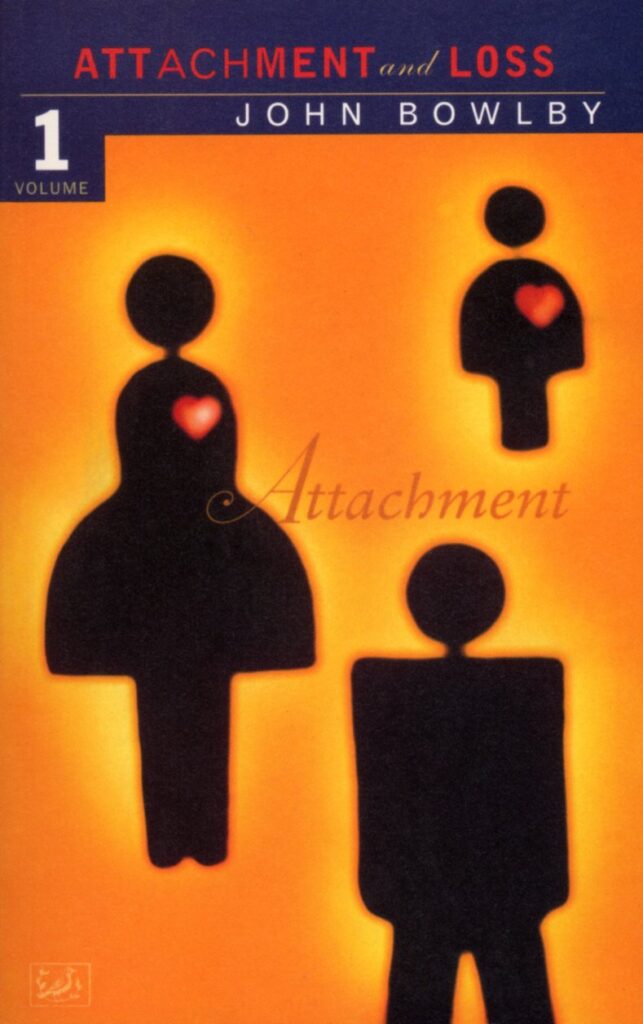
I like to dip in and out of Bowlby’s stuff and attachment theory more generally as I parent and also reflect on myself and my history as a certain kind of child who became a certain kind of man. At this point, I don’t feel like I’m discovering too much new content but I do feel like I’m reminding myself of some things that are important to remember. Some theories are fun as a one-and-done, others are worth sitting with over the years. So, while I skim read large portions of Bowlby’s longer works (like this three volume trilogy), I still feel like certain things sink more deeply into me each time. That seems like a worthwhile exercise to me.
7. Jeffreys, Tom. The White Birch: A Russian Reflection (2021).

Robert MacFarlane, Roger Deakin, Nan Shepherd, W. G. Sebald—Tom Jeffreys may aspire to being like these writers but he’s young and has a long way to go. Based on The White Birch, I’m not entirely sure he’ll get there. You would think his Russian travelogue, which blends nature- and science-based reflections with sociopolitical and cultural commentary, might take us somewhere similar but there’s something missing from it. It feels… flatter. More detached. Somehow not infused with the same wonder, worldliness, and depth of affect that the other writers possess. As if Jeffreys is not only a foreigner in Russia but also, somehow, a bit of a tourist in the world that exists offlne. Perhaps he should heed the advice of another Scottish fellow (W. H. Murray). “Find beauty. Be still.” Then, maybe after ten years of that, write a book.
8. Rulfo, Juan. Pedro Páramo (1987 [1955]).
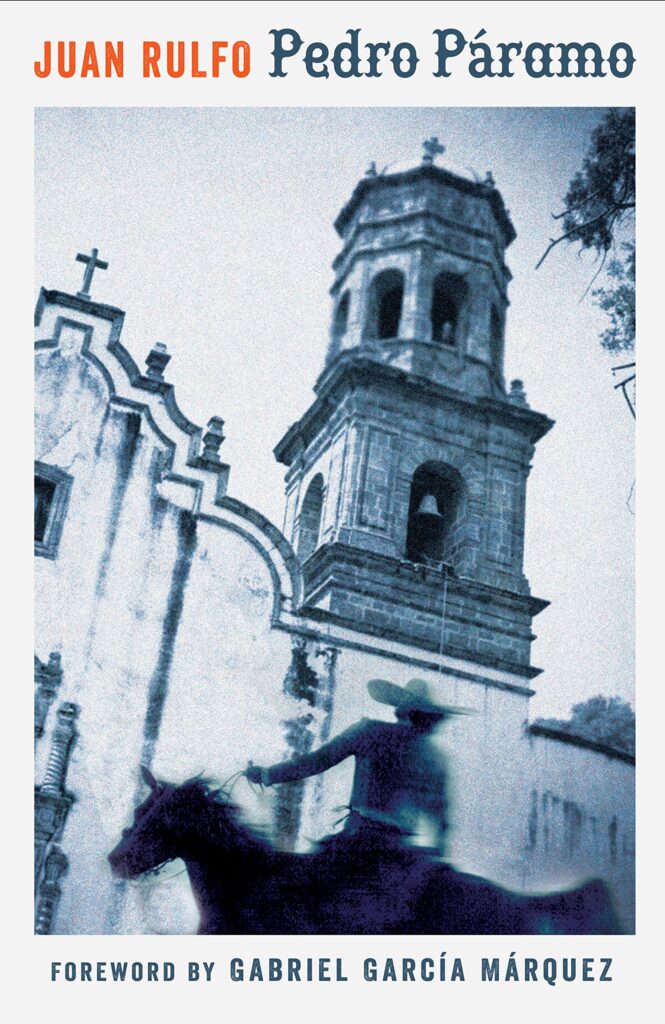
Considered one of the great novels of Mexican literature, Pedro Páramo is a haunting tale of a man who goes to seek out his father after his mother dies. Part magical realism, part surrealism, part dreamscape, part Mexican gothic, it reminded me of the work of Adolfo Bioy Casares. It reads quickly and I’m happy to have read it.
9. Kertész, Imre. Liquidation (2005 [2003]).
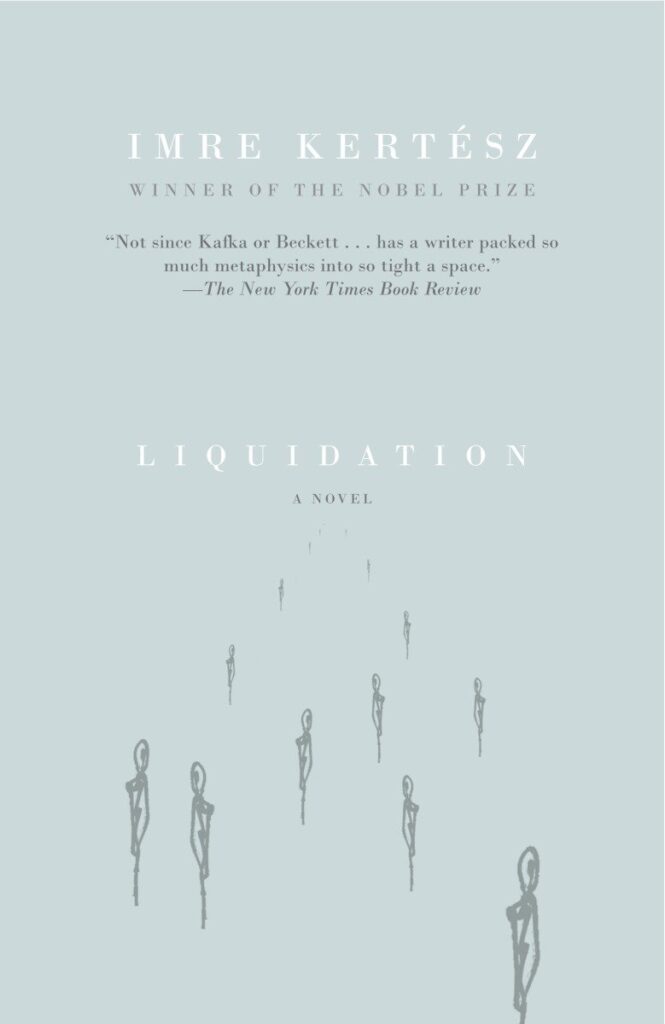
Imre Kertész, a Hungarian Jew, was fourteen years old when he went into Auschwitz alone (the same age my son is now). He survived, and later wrote a trilogy of books (which are only thematically related) pertaining to Auschwitz and the necessity and impossibility of both escaping it and bearing witness to it. Liquidation is the third book in that trilogy and, coming later in his life, after he had already seen Stephen Spielberg and Roberto Benigni turn the holocaust into “kitsch” (a term Kertész applied to Schindler’s List [1993] but which just as easily applies to Life is Beautiful [1997]). As a result, Liquidation more heavily emphasizes the impossibility of communicating Auschwitz, even though many of the witnesses continue, in some capacity, to never leave it behind.
10. Möring, Marcel. The Great Longing (1995 [1992]).
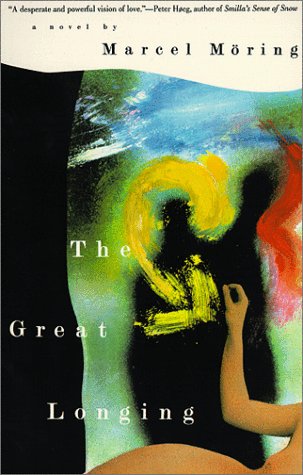
I continue to try and learn more about my Dutch heritage by reading Dutch literature (I have a kinda-joking-but-kinda-not theory that the Dutch are seriously fucked and so far nothing I’m reading or learning is disproving this theory). It was interesting to reading Möring after reading Kertész because of their thematic parallels. While Kertész focuses more on the relationship of bearing witness to the past which never really ended, Möring focuses on the impossibility of remembering formative traumas related to the loss of love, a benevolent universe, belonging, and the existence of God. It’s actually a very beautifully told story which exceeded my expectations since some reviewers had compared Möring to Kerouac and the Beats (who never really tickled my pickle… in fact, I’ve been playing with another kinda-joking-but-kinda-not theory that the Beats were the Incels of the ‘60s… an initially counter-intuitive proposal given all the fucking the Beats did and all the fucking Incels don’t do, but if you get into their positionality in relationship to heteronormativity, misogyny, and toxic masculinity as it flows into various anti-alpha-male, beta-male subcultures, some really interesting parallels emerge). I wonder, a bit, if the lostness of the protagonist in The Great Longing is a bit representative of the Dutch as a people after the Second World War (as that event seems to have left a long scar across the nation and it still throbs like an open wound in the literature I’m reading). Anyway, this is probably my favourite book that I have read from the Dutch so far.
11. Saunders, George. The Brief and Frightening Reign of Phil (2005).
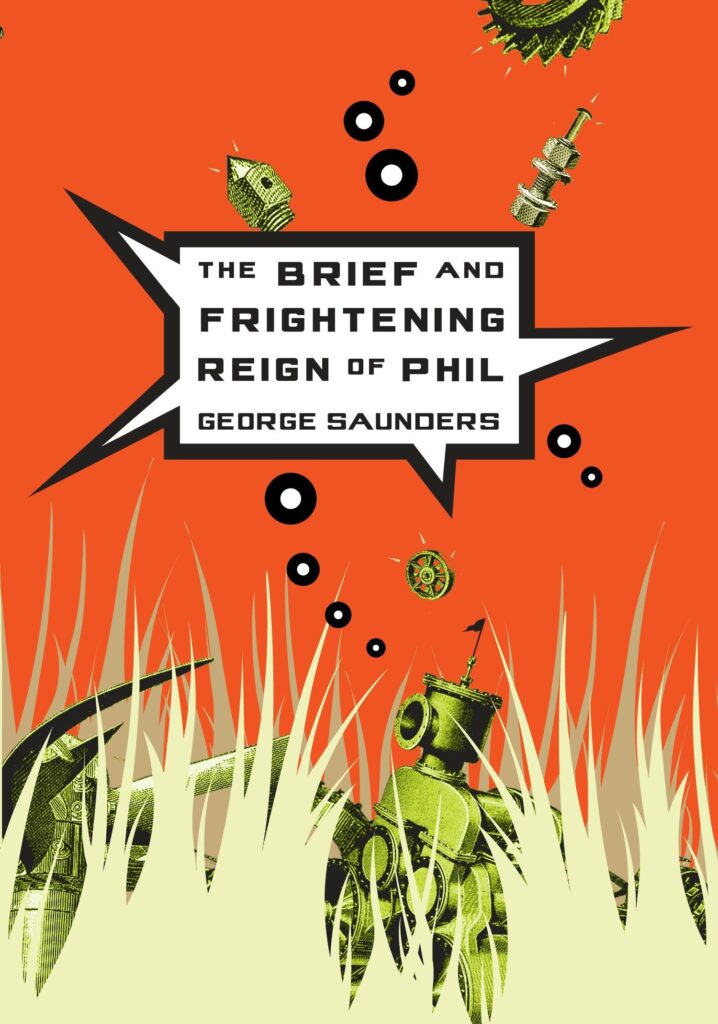
Saunders can be a playful writer and is skilled enough to get away with being silly. The Brief and Frightening Reign of Phil is a satirical examination of American border imperialism under Bush the Second (prior to Trumpian neo-fascist death squads and Biden’s neoliberal cages-for-kids). In the tradition of the satires I appreciate the most, it is equally parts humorous, devastating, absurd, and wise. That’s a tricky combination of things to do well. But Saunders does it.
Movies
1. Taylor, Tate. Ma (2019).
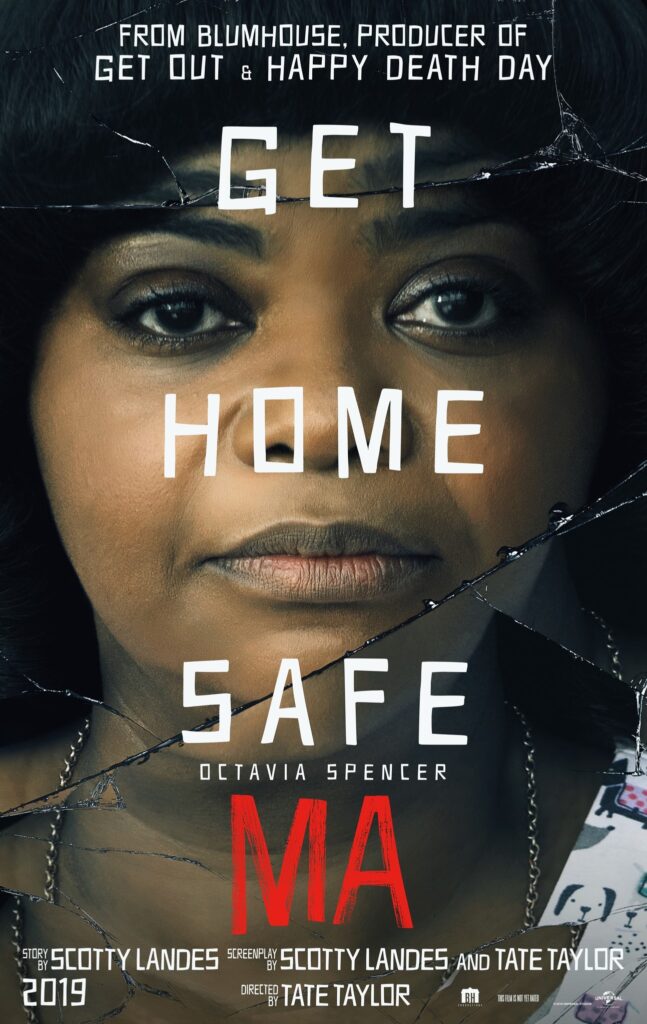
Bill Posley’s riff on blaxploitation horror movies (Bitch Ass [2022]), claims to tell the tale of “the first Black serial killer to wear a mask” is playful and also reinvigorates splatter gore films that mostly went stale through various iterations of Jason or Michael Myers. So, when I saw that Ma was a horror film about a Black woman who seeks vengeance of the White folx who abused her in high school, I thought it might be fun. But I should have done my homework. I didn’t recognize the name of the Director but it turns out that he’s the White-boy from Mississippi who made that godawful racist film, The Help (2011). Aaaaand who then went on to play the White-victim card when people criticized his shit movie (as he states in The Guardian: “All of the criticism we’ve been facing is based on the fact that I’m not an African-American director and that Kathryn [the author of the book on which the movie is based] is not an African-American writer”; see here: https://www.theguardian.com/film/2011/oct/20/the-help-domestic-servants-on-film). Anyway, the whole thing was pretty crummy and disappointing and blah.
2. Hyams, John. Sick (2022).
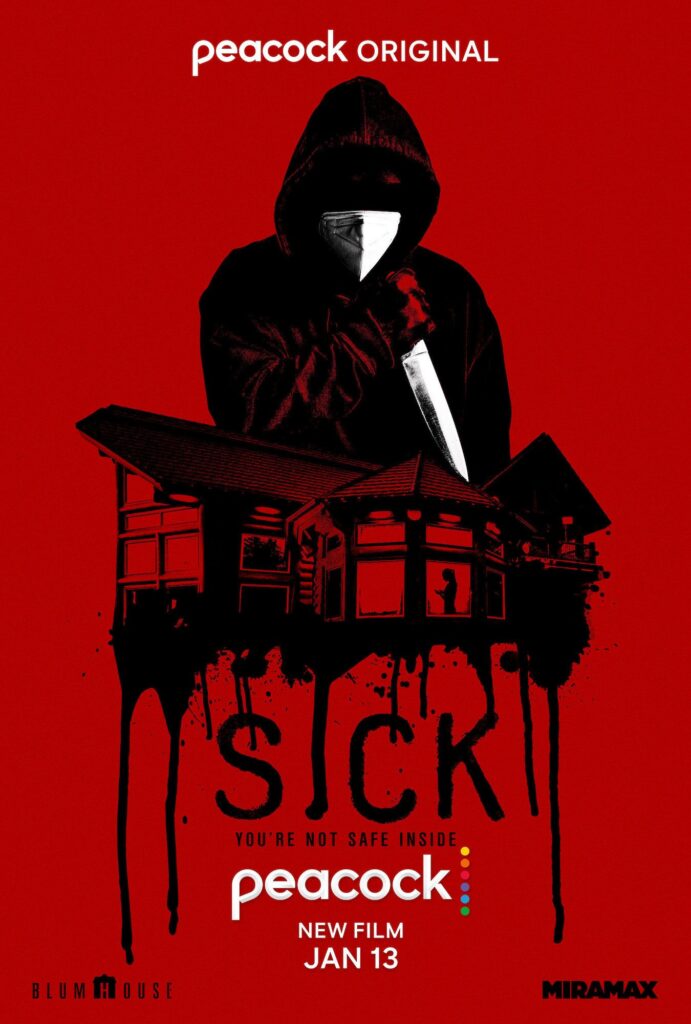
It takes a lot to make a film that stands out because of how little character development there is, how truly idiotic the plot is, and how entirely disinvested and bored the viewer becomes—even though it’s a slasher movie. Films like that are a time a dozen and I mostly manage to avoid them but a friend wanted to watch this film with me and, wow, it stood out in all these ways. When the big reveal came, it was so utterly stupid that I get annoyed just thinking about it now. It invites contradictory interpretations—which, in a well-made movie (say Guillermo del Toro’s Pan’s Labyrinth [2006]) can really create a fun and enriching experience for the viewer who learns to abide the tension found in such a parallax view—but, in this instance, these contradictory interpretations are both equally stupid and, when held together, exponentially increase the viewer’s urge to bang their head off of the wall.
3. MacKenzie, David. Hell or High Water (2016).
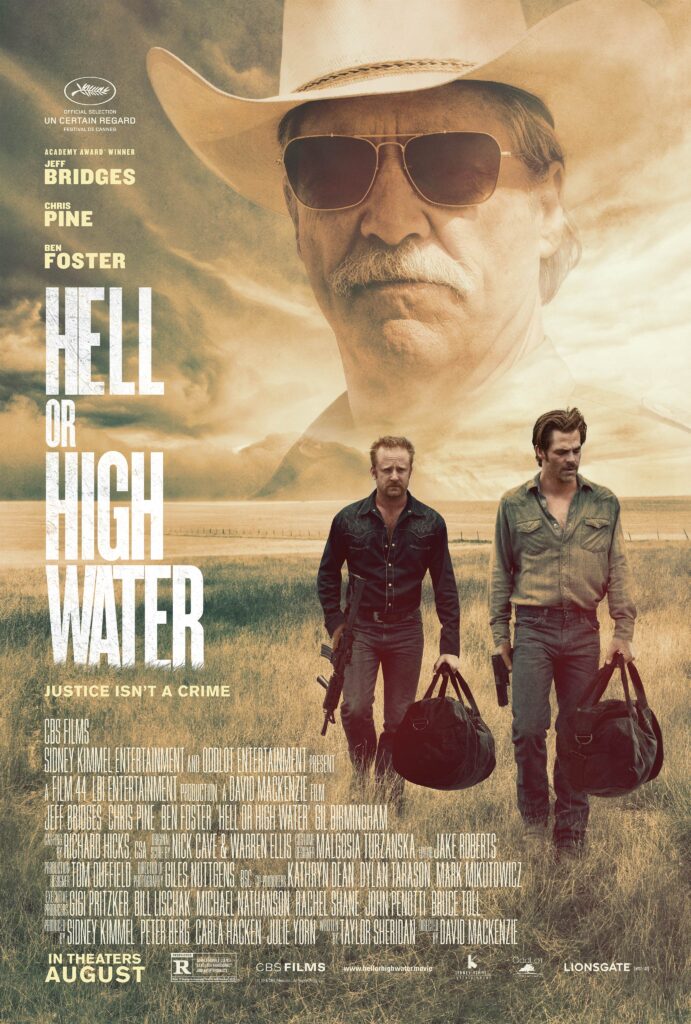
Nostalgia, Svetlana Boym suggests, is a longing for a home we lost, never had, or imagine having in the future, paired with a romantic attachment to feeling that longing itself. I only have a little experience in the genre of neo-Westerns but I wonder if nostalgia is the overriding feeling associated with the genre. David MacKenzie’s action-driven-yet-emotionally-compelling Hell or High Water is certainly infused with it. There is a deep well of sadness here, but its water is sweet. If one is to survive the abiding presence of feelings like these, stoicism and self-sacrifice become almost inevitable. One bears up under this longing and persists, not so much for one’s self, as for the sake of those one loves—and those to whom one is accountable and for whom one is responsible.
And such love, particular as shared between cis-gendered heterosexual men (brothers, friends, fathers, and sons), is also a strong theme here (as it is in another neo-Western I recently enjoyed, Kelly Reichardt’s truly fantastic First Cow [2019]). These are tough guys, fundamentally traumatized, scarred, and fucked-up guys, but they love each other deeply, they say, “I love you” and “I love you, too” before yelling, “fuck you!” at each other. They tease each other. They half-wrestle, half-dance. They celebrate and mourn one another. And they put aside their own interests to look after each other. I wonder if part of the appeal of Westerns, and other war movies, is the way in which they allow straight dudes in a misogynistic, homo-antagonistic, toxic culture explore the feelings of love, affection, tenderness, and care that they have for other straight dudes.
Anyway, the fact that Hell or High Water had me thinking all these things, means it was a solid film and I`m glad to have watched it. Recommended.
4. Watkins, James. Eden Lake (2008).
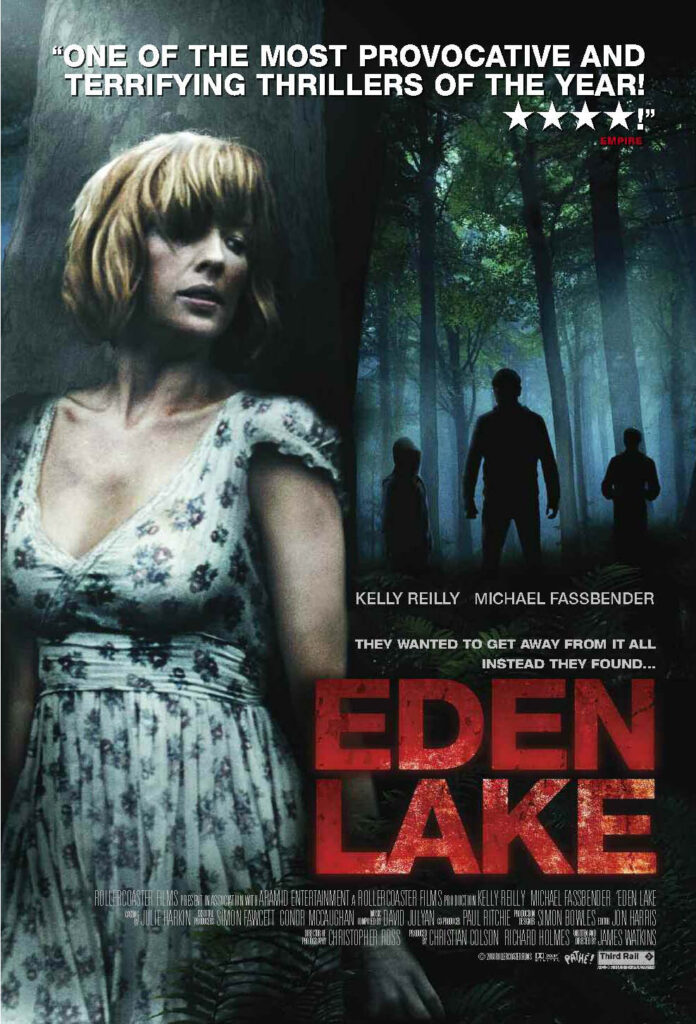
Well, I said to myself after watching Eden Lake, that movie was fucking bleak. And then I googled to see what the critics had to say about the film and I was surprised by how often they, too, used that exact word—bleak. Fuck. Different subgenres of slasher-type movies use violence and gore in different ways. Some like to clown with it. Some like to sexualize it (ew, these ones are the worst—and there are a lot of them). Most like to shock in some way or another. But there was a particularly variant in the early 2000s from the “New French Extremism” horror genre (think movies like High Tension [2003], Inside [2007], and Martyrs [2008]), that specialized in a form of hyper-realistic, unflinching body horror which leave the viewer feeling… devastated (unless, of course, the viewer is a sociopathic sadist or edgelord—which are maybe just two different names for the same thing). Such films don’t just present people in hopeless circumstances—they also want to infect you with hopelessness in your day to day life. They don’t just take anything beautiful and lacerate it, shit on it, sexually abuse it, and burn it alive—they also want that to happen to whatever visions of beauty you have within yourself. That, at least, is how these movies feel to me. Eden Lake fits within that subgenre. No thanks.
5. Hillcoat, John. The Proposition (2005).
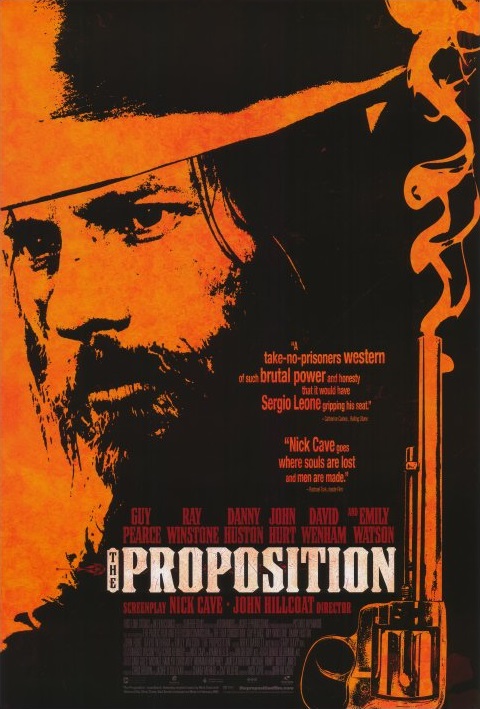
Speaking of bleak, I was curious to see what John Hillcoat did with Nick Cave’s screenplay in this movie about three Irish brothers who are living the outlaw life during the early days of Australian colonization. Turns out not much. Seems like Cave and Hillcoat want to just see how far they can take the viewer into the heart of darkness because, um, well, because I think they just wanted the viewer to walk away saying, “woh, man, that was really fucked.” But, apart from all the edgy provocations, The Proposition is actually fucked in a whole bunch of more subtle and serious ways. It doesn’t shy away from showing White supremacist violence and racism against the Indigenous peoples, but it also centres or recentres Whiteness in all kinds of ways. A close up of an Indigenous man’s head being blown apart by a gun shot is followed later by a long close-up shot of the back of a White woman in the bath which, as a friend pointed out, says a lot about how White and Brown bodies are used in this film. The Indigenous actors are all undeveloped, background characters, and props. And although the White characters are frequently brutal, the White couple (the police chief and his wife, both of whom hail from England) are supposed to be tragic heroes of some kind (the “good Whites” versus the “bad Whites”). But, they truth is, they were all White supremacists and by valorizing the one couple, it sure seems that Hillcoat and Cave aren’t only trying to save Whiteness, they are also trying to save White Supremacy. And even the bad Whites—who are bad because they rape and murder other Whites, instead of just doing that to Indigenous peoples—die nobly, reciting poetry and watching the sunset. Indigenous people end up in pieces, tortured White outlaws end up resting in peace.
6. Wright, Tom. The Stranger (2022).
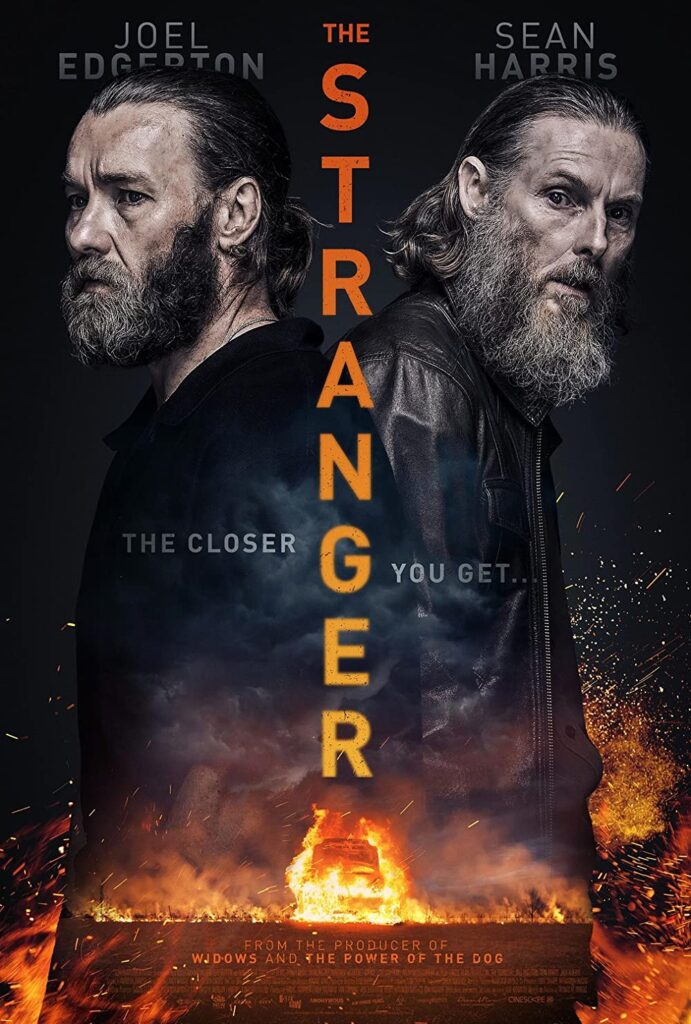
I’ve been trying to explore genres that I don’t engage very much and so, when I saw that this Australian undercover cop drama showed up in the Un Certain Regard category at Cannes, I figured, hey, at least it has to be technically good. And it was. Wright certainly focused more on affect than action and did an excellent job of building character, tension, and possibilities during the first two-thirds of the film. But then, well, I felt like it ended up following a pretty generic dénouement. Too bad because, for a minute there, it had me feeling all moody and curious.
7. Bettinelli-Olpin, Matt and Tyler Gillett. Scream VI (2023).

Bettinelli-Olpin and Gillett did a good job of rebooting the long-since-stale Scream franchise with Scream 5 in 2022. This is their sequel to the reboot of the original which is also a reboot of the original sequel, only within the context of a self-aware franchise and so, yeah, it goes meta in all the ways in which one would expect. But, being the sixth film in the franchise, it also shows how limiting six renditions of the same kind of meta-socially-conscious-slasher-social-commentary film can be. In fact, it’s getting hard to find a Gen Z-oriented horror film that isn’t meta-self-and-socially conscious at this point (apart from the far, far more stale reboots coming from the Michael Myers or Leatherface franchises… if you want to know how splatter core and jump scares can actually be as boring as fuck, just check one of those out). So many titles leap immediately to mind: One Cut of the Dead, Behind the Mask, The Final Girls, Bodies Bodies Bodies, Freaky, the list goes on and on and on. So, yeah, Scream VI was decently entertaining but clocking in at more than two hours, it felt like it was forty minutes too long.
Documentaries
1. Hillinger, Suzanne. Money Shot: The Pornhub Story (2023).

Money Shot is a good reminder that interviewing a bunch of people who are some kind of relation to an issue and then throwing those interviews onto a screen does not a good documentary make. Sex work, sexual exploitation, content creation and content theft, workers’ trying to earn money and corporations trying to wrest billions of dollars of profits from workers, human trafficking, sexual fantasies and sexual abuse and sexual violence are complicated things to navigate when all thrown together. Navigating this well, while also not being directive or preachy, but while also not justifying are supporting very real abuses (of any kind), requires a lot of a director. Former sex worker turned documentary filmmaker, Ovidie, does this well in her 2017 piece, Pornocracy. Suzanne Hillinger does not do this well. I can’t help but think that, no matter what your previous understanding of these issues, if you don’t know much going in, you’re going to come out thinking you know more, but actually knowing less. This is a real bummer because the Pornhub/MindGeek story is one that the public should know (although, NB: MindGeek, the Canadian tech corporation that owns Pornhub, was recently purchased by a Canadian private equity firm called “Ethical Capital Partners”).
2. Canner, Liz. Orgasm Inc.: The Story of OneTaste (2009).
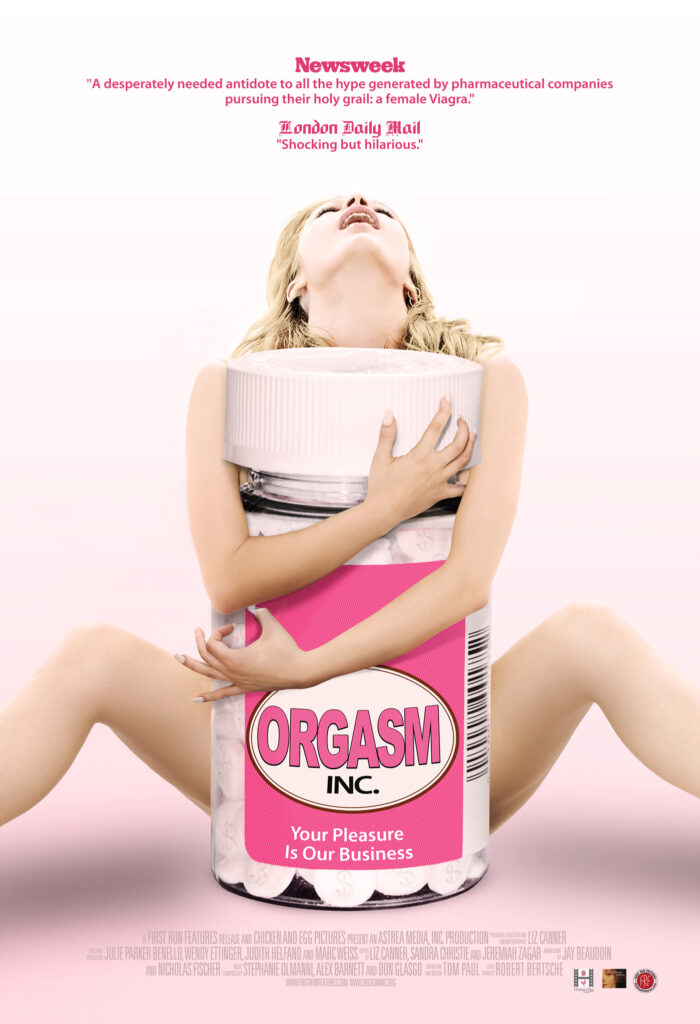
OneTaste is a “personal wellness” corporation that focused on teaching Orgasmic Meditation (OM… of course… White people love mixing sex with cultural appropriation). Well, is said it focused on that, but mostly it focused on milking rich people for as much money as possible to enrich serial-rape apologist, sex offender, all around super-fucked-up-super-White-lady, founder and CEO Nicole Daedon, and her inner circle of White ladies. Nothing screams White feminism like robbing and raping other women under the banner of health, spirituality, and empowerment, in order to become a lady boss (see also: Hillary Clinton and Margaret Thatcher). Orgasm Inc. shows all of this in detail. It’s sad. It’s fucked. It’s often hard to watch. The perpetrators got away. Not all of the victims became survivors. Ugh.
3. Brown, Margaret. Descendant (2022).
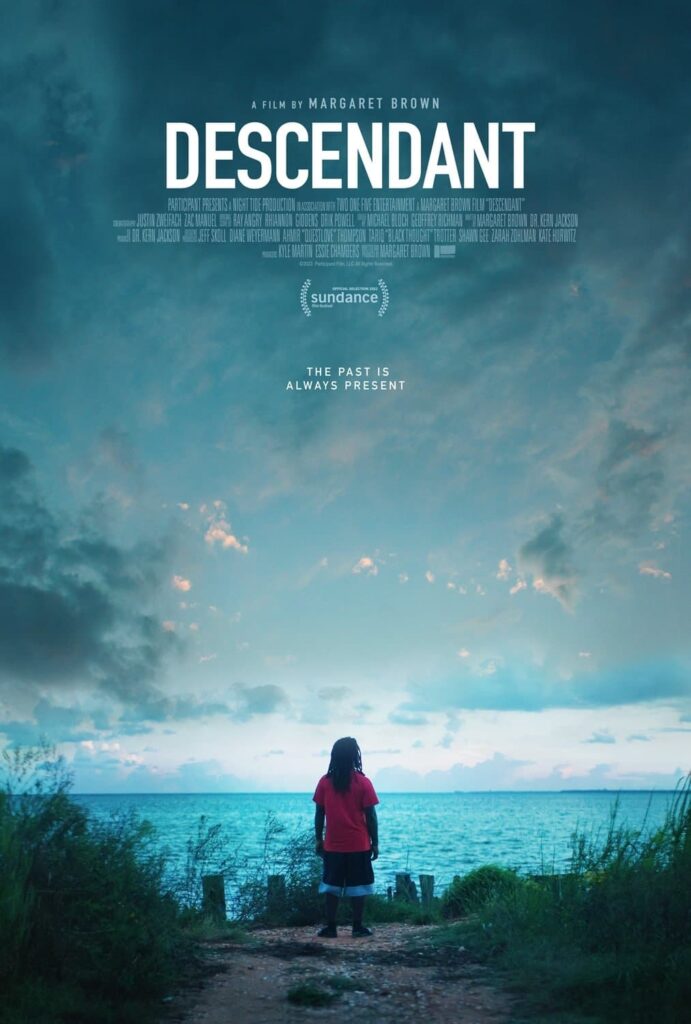
The truest histories, by which I mean the histories that most powerfully shapes the structures of power that rule our societies, cities, nations, and social imaginaries, are often buried. Or, in the case of Mobile and Africatown in Alabama, they were taken upriver, set on fire, and sunk. But these stories live on, not only in flesh and blood descendants, in socioeconomic dynamics, and theopolitical ideologies, but also in narrative form, passed from one surviving generation to the next. Margaret Brown seeks to capture these narratives, record them before they are lost (as Zora Neale Hurston did before her), and connect subaltern stories with the authority granted to more institutional discourses of power/knowledge (in this case, bringing together the stories told in Africatown about a slave ship that was sunk up river and a dive team from National Geographic who end up finding the ship). It’s a well-made film and it’s interesting to see how Brown (a White woman) is developing as a documentary filmmaker. While her earlier documentary on White supremacy and Black resistance in Mobile and Africatown (The Order of Myths [2008]) gave about equal screen time to White and Black communities, here it is almost all Black folx who are centred, who speak, who act, and who guide the viewer through the content.
4. Hurt, Byron. Hazing (2022).
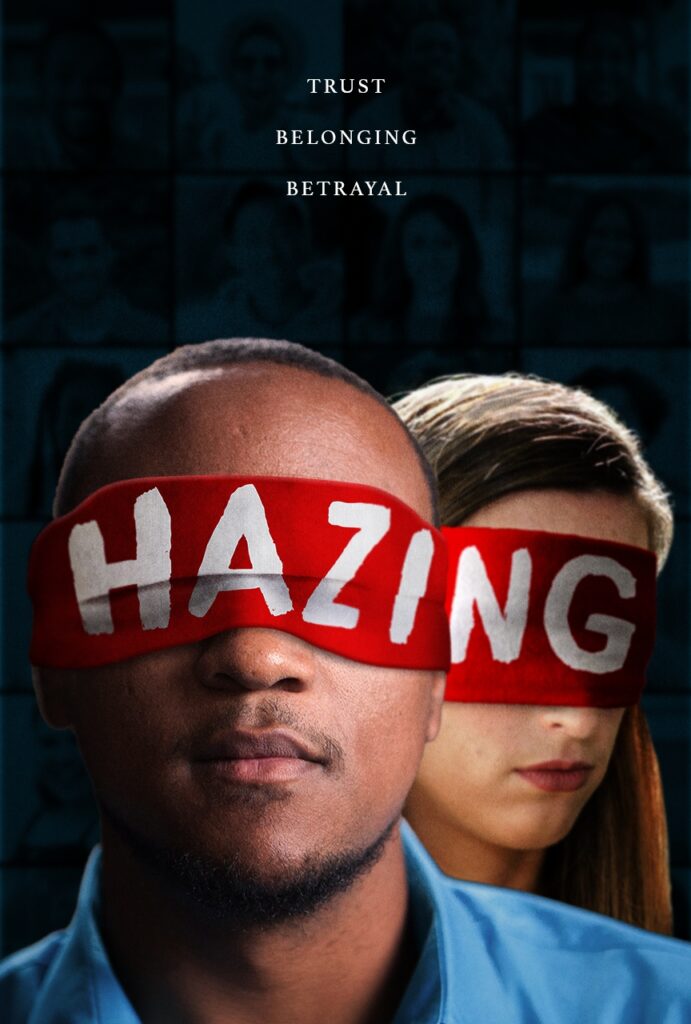
Hazing is different than bullying. Bullying is the use of intimidation and violence to both create and enforce a process of separation of an in-group from an out-group or an other who is constructed as an Other. Bully makes sure that boundaries are created, violently maintained, and never crossed. Hazing is very different. It is a form of violence imposed on those who are being initiated into an in-group that is constructed as a fictive kinship that often has stronger bonds than more traditional models of kinship.
As such, hazing mimics some spiritual rites of passage wherein people deprive themselves of food and water, inflict pain upon their bodies, endure stressful positions or exposure to the elements for long periods of time, and so on. But there is more here than mimicry. Imo, there is actually an anti-spiritual perversion occurring. In spiritual rituals (take sundance as an example), people undergo grueling experiences in order to grow, heal, and be liberated. In hazings, people are brutalized in ordr to be incorporated in into misogynistic, heteronormative racial capitalism. If it’s a spiritual practice, is an initiation into the death cult of neoliberalism. Thus, while rituals like Sundance are a means of healing intergenerational traumas, hazings are a means of transmitting intergenerational traumas.
These, at least, were the thoughts that pinged through my brain while watching this documentary.